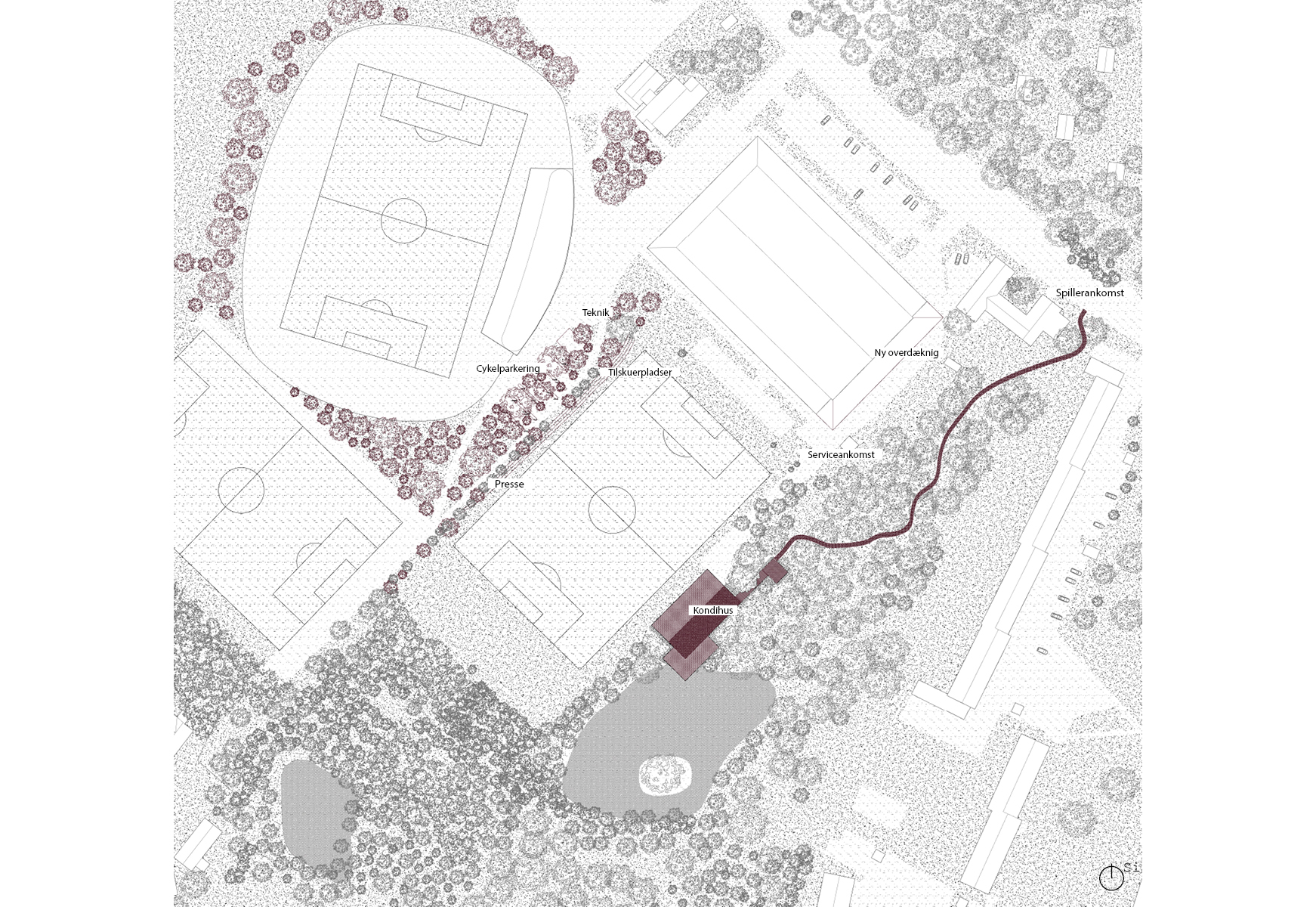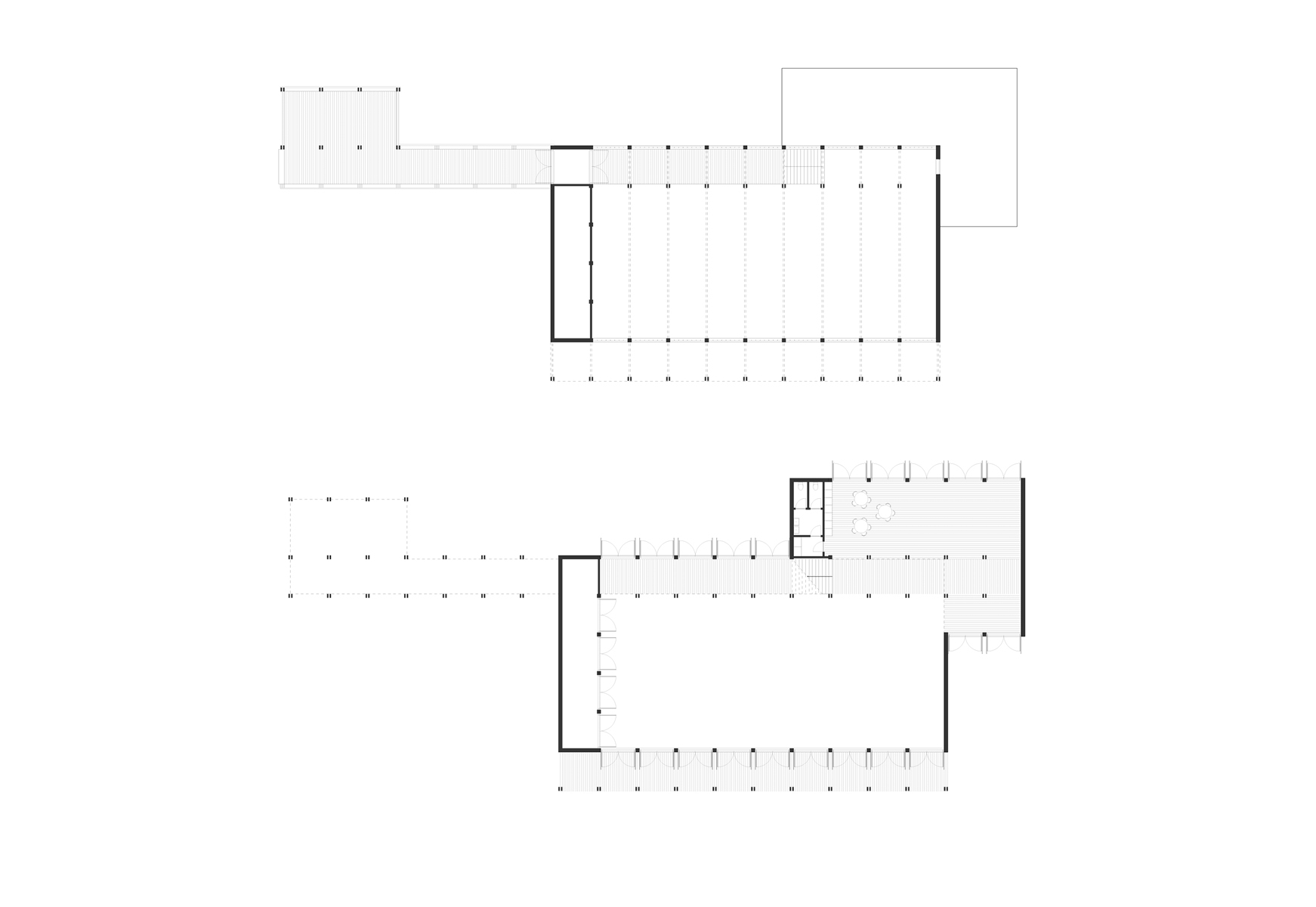2O22 | Training facilities for national team
This proposal was developed for the Danish Football Association, as the male national team needed new training facilities. The brief was to create a large open space for functional training with storage facilities and direct access to the field while using primarily sustainable building materials.
The project creates a new player arrival and pre-activation centre as well as developing the existing infrastructure around Helsingørhallen and Helsingør Stadium. Through developing the landscape, the project creates a more enclosed space, where the new pre-activation centre will be like a house on the edge of the forest with the track in a clearing. The players arrive through a forest path to the building and from there walk onto a bridge at the height of the first floor, allowing them to overlook the large training room and further out onto the field.
For our proposal, we prioritised designing with recycled wood from the building industry. Recycled timber is usually in shorter lengths so in order to achieve a wide span for the training space, we used an old Swedish technique for the beams, called HB-balk. HB-balk is a construction method developed in the 1940s for plane hangars and warehouses using short planks that have been cross nailed and framed to make long spans up to 46 m. The beams are supported by a double-column construction, in which we have placed the arrival axis on one side and a covered outdoor area on the other, which forms a transition between outside and inside.
To the north-east, the house closes with functional programs such as storage rooms and kitchen/toilet, and to the south-west the closed gables function as sun protection and ensure that the hall does not overheat. To the north-west, the house can be opened by large doors, which create a direct connection from the training room to the track along the entire length of the room. Correspondingly to the southeast is a smaller room for quieter activities. Here, too, the room can open its full length with doors towards the forest.
This 6-week project was made together with Stinus Bertelsen, Sheila Koyo Møller, Majse Nørhald, Magda Kasprzak and Emma Buus Lind Larsen during our 2nd semester of masters.








